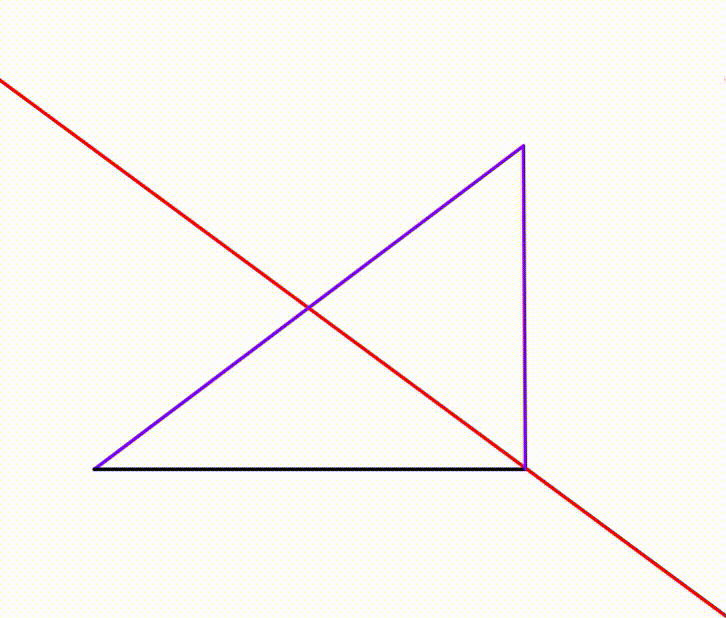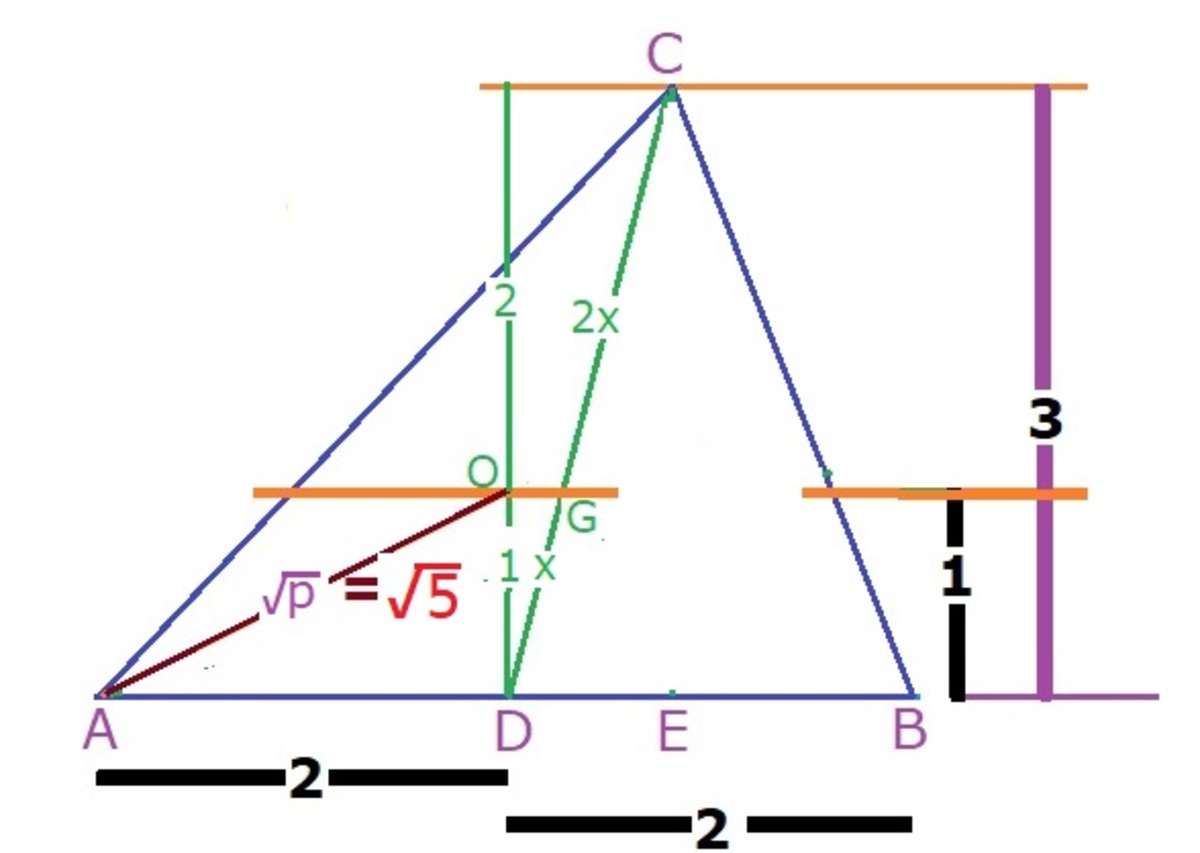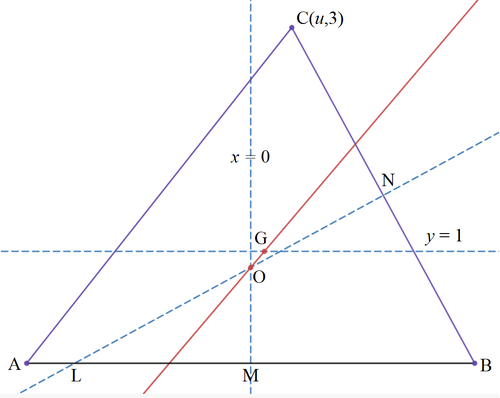Dynamic Geometry: P137
 The diagram shows a purple triangle. Its horizontal base in black measures
4
and its altitude is always equal to
3
. Its apex moves horizontaly freely. The red line is the Euler line. When the red line is parallel to the triangle's base, the triangle's circumradius can be expressed as
p
, where
p
is a square-free positive integer. Find
p
.
The diagram shows a purple triangle. Its horizontal base in black measures
4
and its altitude is always equal to
3
. Its apex moves horizontaly freely. The red line is the Euler line. When the red line is parallel to the triangle's base, the triangle's circumradius can be expressed as
p
, where
p
is a square-free positive integer. Find
p
.
The answer is 5.
This section requires Javascript.
You are seeing this because something didn't load right. We suggest you, (a) try
refreshing the page, (b) enabling javascript if it is disabled on your browser and,
finally, (c)
loading the
non-javascript version of this page
. We're sorry about the hassle.
2 solutions
 Median is divided into 2:1.
Median is divided into 2:1.
G
D
=
1
/
3
∗
C
D
.
S
i
n
c
e
r
e
d
l
i
n
e
s
a
r
e
∣
∣
O
D
/
3
=
x
/
3
x
.
.
.
O
D
=
1
S
o
p
=
O
A
=
O
D
2
+
A
D
2
=
1
2
+
2
2
=
5
p
=
5
.

Let the triangle be A B C , where A B = 4 is the horizontal base. Let the midpoint of A B , M be the origin ( 0 , 0 ) of the x y -plane. Then A = ( − 2 , 0 ) , B = ( 2 , 0 ) , and C = ( u , 3 ) . Then the centroid of △ A B C ,
G = ( 3 − 2 + u + 2 . 3 3 ) = ( 3 u , 1 )
Therefore G is always on y = 1 . Since the circumcenter O is the meeting point of perpendicular side bisectors, it is always on the x = 0 , the y -axis. As G and O are on the Euler line, the Euler line is parallel to A B , when O is on y = 1 that is O = ( 0 , 1 ) . Then the circumradius of △ A B C .
R = O B = ( 2 − 0 ) 2 + ( 0 − 1 ) 2 = 5
The required answer q = 5 .
The Euler line of a triangle △ A B C passes through its orthocenter ( H ) , centroid ( G ) and circumcenter ( O ) .
Also, point G , divides line segment O H in the ratio 1 : 2 ⟹ G H O G = 2 1
In △ O M C , O M 2 + M C 2 O M 2 + 4 ∴ O M = H D = O C 2 = R 2 = R 2 − 4 Since △ O G M ∼ △ H G A , G H O G = A H O M ⟹ 2 1 = A H R 2 − 4 ⟹ A H = 2 R 2 − 4 Since the length of the altitude A D is 3 , A D = A H + H D = 3 R 2 − 4 = 3 ⟹ R = 5